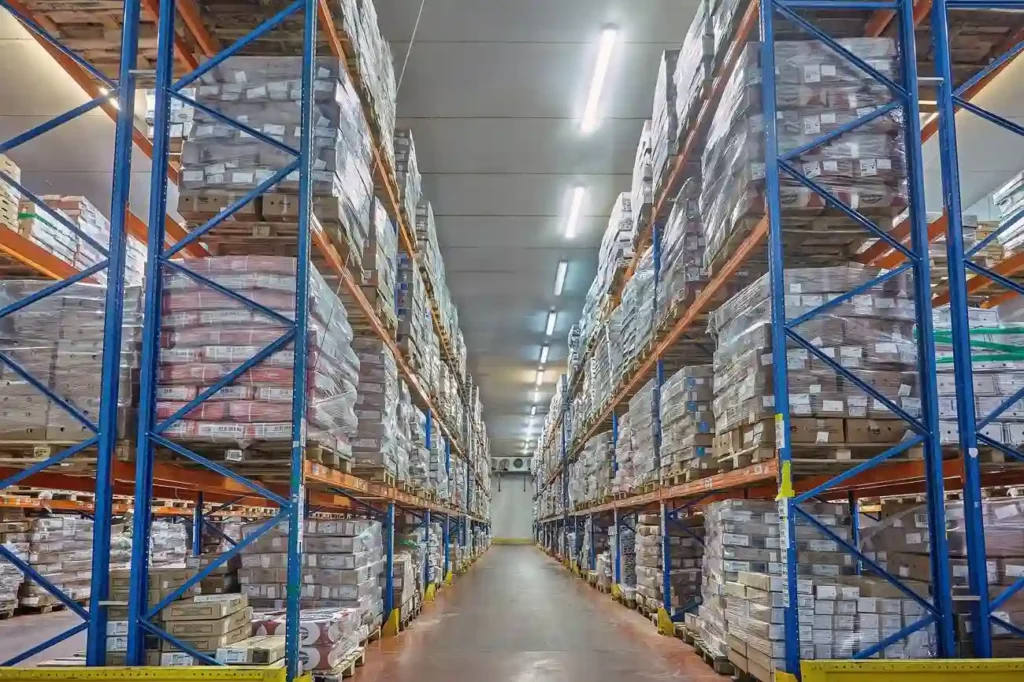Cross-Docking is a logistics strategy that involves the efficient transfer of goods directly from inbound transportation, such as trucks or containers, to outbound carriers, without the need for long-term storage.
In Cross-Docking operations, products move swiftly through the supply chain, minimizing handling time and storage costs. This streamlined approach to distribution has gained popularity in recent years as businesses seek ways to optimize their supply chain operations and meet the growing demands of modern consumers.
Despite being a valuable strategy, cross-docking benefits certain industries, while being ineffective for others. In this article, we will review some industries that use Cross-Docking in their supply chain.
1-Retail Industry
In the retail industry, timely delivery of products is crucial to meet customer demands and maintain a competitive edge. Cross-Docking provides retailers with an effective solution to achieve rapid order fulfillment and reduce inventory holding costs.
By bypassing the traditional warehousing model, retailers can expedite the movement of goods from suppliers to stores or directly to end customers, ensuring products are readily available when and where they are needed.
In the retail sector, businesses that require fast delivery of products to consumers due to the perishability of the items or rapidly changing trends benefit tremendously from cross-docking. Following are some of the examples of such businesses.
- Fashion and Apparel: With the advent of fast fashion, reduced lead times and inventory costs have become a necessity for the fashion industry. Cross-docking ensures that products are delivered to retailers promptly and stores are stocked with the latest fashion items.
- Electronics: The world of electronics has experienced exponential growth over the last two decades. This is in part due to the rapid advancements in the technology space. Cross-docking has played a crucial role in making this possible by transporting products straight from the manufacturers to retailers to catch up with the changing trends of the market.
- Groceries: Grocery items such as fruits and vegetables have an incredibly low shelf life. Since storage is not an option for grocery stores, cross-docking ensures that consumers have access to fresh fruits and vegetables whenever they visit a grocery store.
2-E-commerce Sector
The e-commerce sector has witnessed tremendous growth in recent years, fueled by the increasing popularity of online shopping. In this fast-paced and highly competitive industry, efficient logistics and order fulfillment are critical for success.
Cross-Docking has emerged as a valuable tool for e-commerce companies, enabling them to optimize their supply chains and meet the demands of modern consumers. Following are some of the major online retailers that have made cross-docking an essential part of their supply chain:
- Amazon: As one of the world’s largest e-commerce giants, Amazon relies heavily on Cross-Docking to achieve its trademark fast and efficient order fulfillment. The company strategically places fulfillment centers near suppliers and key markets, allowing products to be swiftly transferred and shipped to customers.
- Alibaba: A prominent player in the global e-commerce landscape, Alibaba uses Cross-Docking to optimize its supply chain in China and around the world. By reducing the time products spend in storage and transit, Alibaba ensures quick deliveries and a seamless shopping experience for its customers.
- Walmart: The retail giant Walmart has embraced Cross-Docking as part of its supply chain strategy for both its brick-and-mortar stores and its e-commerce operations. Cross-Docking helps Walmart efficiently manage inventory and maintain a competitive edge in the online retail market.

3-Automotive Industry
The automotive industry relies on highly efficient supply chain management to support the complex process of manufacturing and distributing vehicles and auto parts.
Car manufacturers employ a manufacturing approach known as Just-in-Time (JIT) manufacturing. Parts and components are delivered precisely when they are needed in the production process, which helps businesses minimize inventory holding costs.
Cross-Docking aligns perfectly with JIT principles by ensuring that auto parts are received and dispatched without delays, eliminating the need for excessive warehousing. This synchronized approach contributes to cost savings and ensures a smooth and efficient production line.
By leveraging Cross-Docking in the automotive industry, companies can:
- Achieve greater supply chain efficiency
- Reduce inventory holding costs
- Improve their ability to meet customer demands promptly
As the automotive sector continues to evolve and embrace advanced manufacturing technologies, Cross-Docking will remain a critical logistics strategy for maintaining a competitive edge and meeting the demands of a fast-paced industry.
4-Food and Beverage Distribution
Cross-Docking has become an essential component of the food and beverage distribution industry, offering numerous benefits for the timely and efficient movement of perishable goods and fresh produce. This sector’s unique requirements, including strict adherence to food safety regulations and the need for rapid delivery, make Cross-Docking an ideal logistics strategy.
Cross-Docking in the Food Processing and Distribution Sector
In the food processing and distribution sector, Cross-Docking plays a pivotal role in ensuring the rapid flow of products from suppliers to retailers or restaurants. Food items, such as canned goods, packaged snacks, and non-perishable items, can be efficiently transferred through Cross-Docking facilities, minimizing storage time and enhancing delivery speed.
For businesses in the sector, this approach helps maintain a steady supply chain and prevents inventory stagnation.
Fresh Produce and Perishable Goods Handling in Cross-Docking Facilities
Cross-Docking is particularly valuable for handling fresh produce and perishable goods, where maintaining product quality and freshness is paramount. Rather than storing these items for extended periods, Cross-Docking enables immediate transfer to outbound transportation, ensuring that fruits, vegetables, dairy products, and other perishable goods reach consumers in optimal condition.
Specialized Cross-Docking facilities equipped with temperature-controlled areas and efficient handling processes ensure that the cold chain is maintained throughout the transfer. This is crucial for preserving the quality and safety of perishable goods, especially in the context of the food and beverage industry, where consumer trust and safety are of utmost importance.
5-High-Tech and Electronics Manufacturing
The high-tech and electronics manufacturing industry operates in a fast-paced and competitive environment, with constant innovation and short product life cycles. This sector faces unique supply chain challenges, making Cross-Docking an invaluable tool for managing components and products efficiently.
Such challenges include the need to manage a diverse range of components and parts from various suppliers across the globe. These components often have precise delivery schedules to align with manufacturing timelines, making logistics coordination crucial for uninterrupted production.
Additionally, high-tech products often require frequent updates and customization, necessitating quick distribution to meet market demands and technology advancements.
Since the manufacturing process in the electronics industry is also time-sensitive, like the automotive industry, it is common for manufacturers to employ the JIT approach.
Cross-Docking helps in managing the diverse and time-sensitive components used in high-tech manufacturing. Suppliers can deliver components directly to Cross-Docking facilities, where they are quickly sorted and loaded onto outbound transportation for immediate delivery to production plants. This enables just-in-time delivery of components, reducing inventory holding costs and ensuring that the right parts are available when needed for assembly.
For finished products, Cross-Docking facilitates swift transfer to distribution centers or retailers, ensuring timely availability to meet consumer demands. This agile approach allows high-tech companies to launch new products quickly and respond rapidly to changing market trends.
Conclusion
Cross-docking services reduce costs significantly, giving businesses a competitive advantage. Industries, like the ones listed above, have specific needs and requirements that require swift delivery of parts or products to respective locations. In such cases, cross-docking plays a pivotal role in meeting the demands of these businesses.
At Mile High Delivery & Cold Storage, we specialize in providing cross dock services to different kinds of companies to help them manage their supply chain operations. We also have a cold storage for keeping their goods safe from spoilage. Contact us today to find out how we can help your business.

